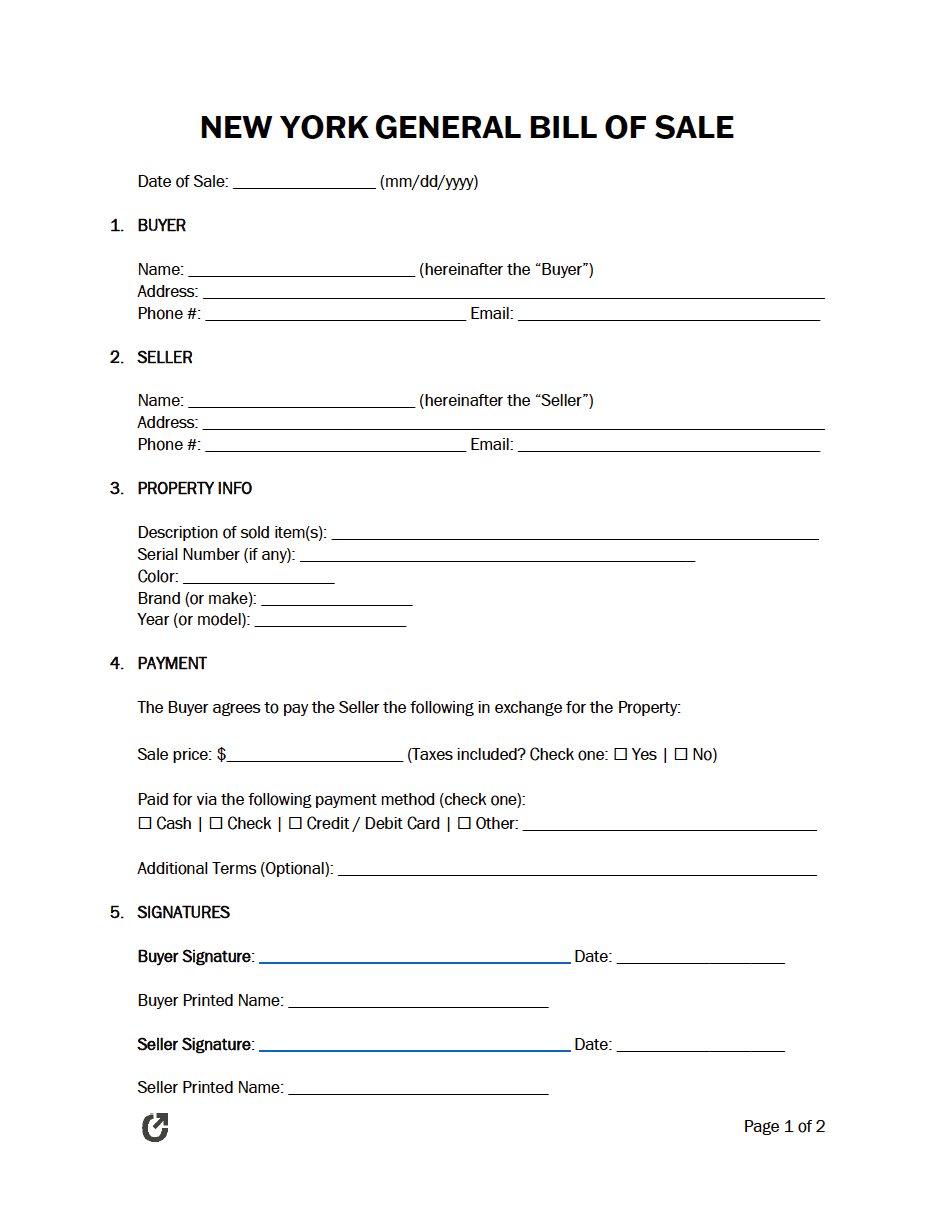New York General Bill of Sale Form
A New York general bill of sale form describes the process by which an individual (the seller) transfers ownership of an item. The opposing party (the buyer) settles on a deal with the seller before completing the form. Once both parties agree, they utilize the bill of sale to outline the transaction details, including the item sold, the purchase price, and the exchange date. After the signing, either person can use it to prove that the seller gave up the property and the buyer paid for it, making them the rightful owner.
| Signing Requirements: The transferor and transferee must enter their signatures. |
What is a New York General Bill of Sale?
A New York general bill of sale serves as a written narrative of how one party transferred their personal property to another person. It provides proof of legal ownership, ensuring the seller’s right to dispose of the item while documenting the buyer’s purchase. Further, the document protects against fraud, as it safeguards both parties in the transaction by providing evidence of the transfer and payment of the property.
When Do I Need a Bill of Sale?
New York state requires residents to obtain a bill of sale when transferring possession of cars, trailers, vessels, snowmobiles, and all-terrain vehicles (ATVs). It proves the buyer’s ownership, allowing them to register and title the property. Without the form, the owner delays the process as they must take additional steps to prove the transaction.
Other transfers that do not involve a title or registration, such as electronics, do not require a bill of sale form. However, completing the document ensures both parties can verify the transaction and the current owner. For this reason, buyers and sellers should consider filling out a bill of sale whenever transferring property for cash or trade.
Should I Notarize the Form?
The state does not require the notarization of bill of sale forms. Nonetheless, buyers and sellers benefit from a notary’s seal of approval as it authenticates the document. Officials understand the significance of this stamp, making them more likely to take on a case if a dispute arises. The previous and current owner(s) cannot prove that they signed the document or handled the transaction without notarization.
